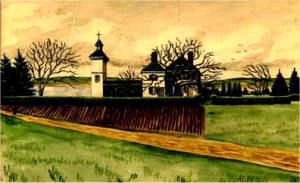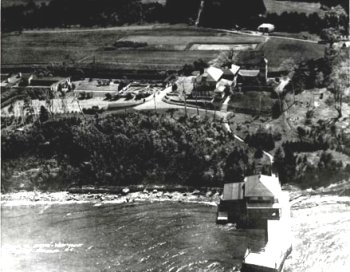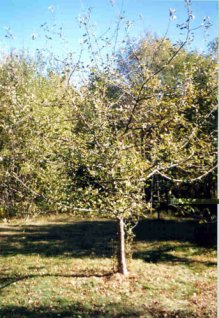
A period painting of the McLennan home at Petersfield.
Courtesy of the Beaton Institute



 |
There are many plants throughout the McLennan portion of Petersfield. However, the webpage focuses on several beautiful and intricately designed gardens including a wildflower garden, moist wildflower garden, and rose garden. The wildflower garden lies south of the "old field" site. Plant species include goutweed and periwinkle, fall crocus, siberian squill, and numerous trees. Three unique plantings in this area include the bloodroot, trout lily and Solomon's seal. Researchers know that these species were McLennan introductions because of their value in gardens of the McLennan time period. Bloodroot is not widespread in Cape Breton, occurring only near Middle River, Big Baddeck and Northeast Margaree. The trout lily is not native to Cape Breton at all. One species of Solomon's seal exists on mainland Nova Scotia but Petersfield exhibits another. Solomon's seal was highly prized by refined ladies of the nineteenth century and it makes sense that Louise Bradley McLennan would include some in her garden. The moist wildflower garden is located west of the wildflower garden. The small stream that runs through the garden gives it its name. Introductions to this section of the estate include periwinkle, bird's-eye speedwell, common speedwell, ale-hoof and columbine. Also included in this area are native trees such as sugar maple, oak, spruce, and larch. |